Gilding
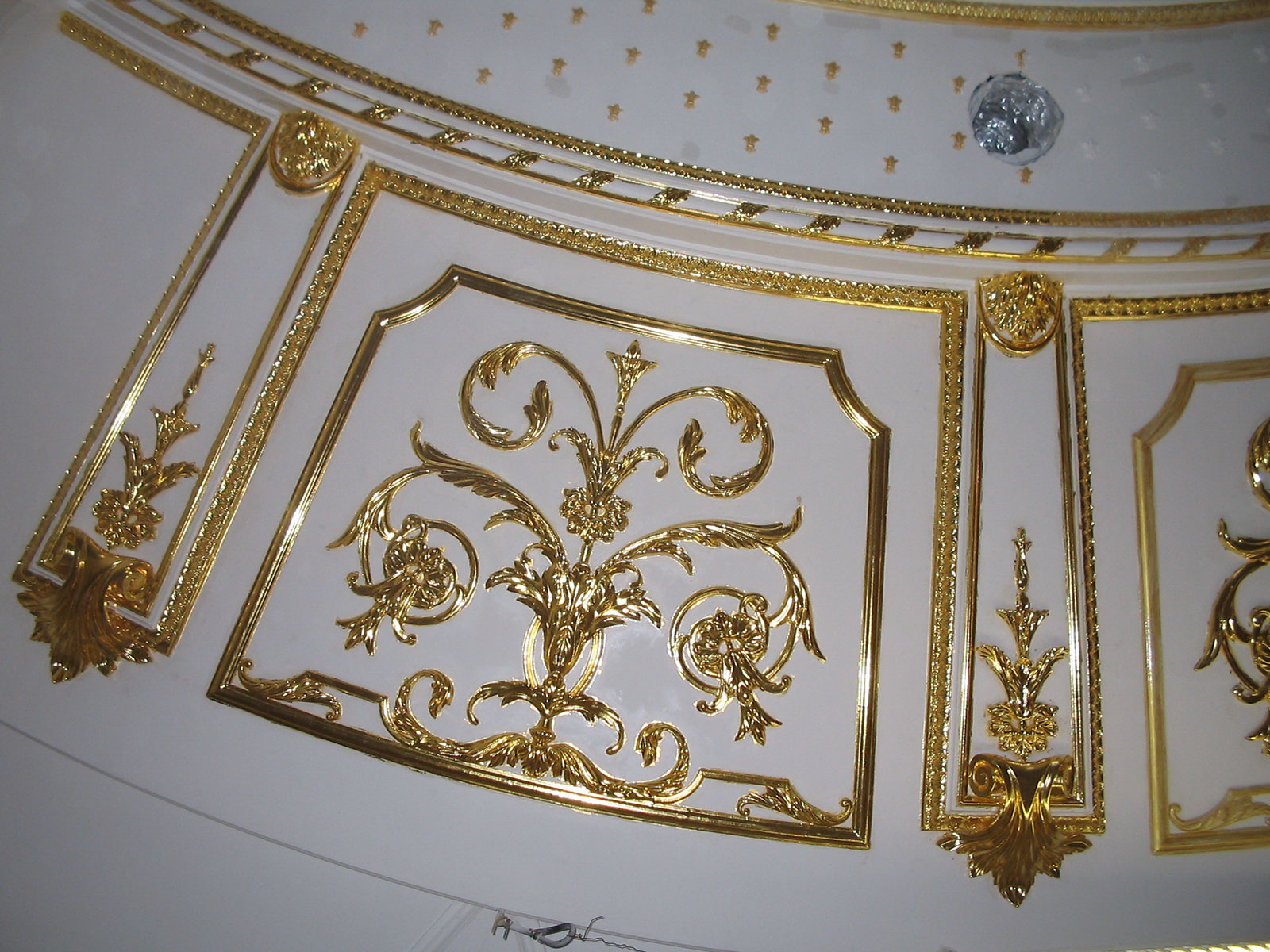
Gilding is an advanced decorative Skill.
How is gold leaf produced.
Gold normally 24 ct is melted and the liquid in poured into moulds to produce small blocks of gold. The blocks are then pounded or pressed out by rollers to a thickness of 0.001" .025mm and then cut into squares approximately 3.4" - 80mm leaves, which are sandwiched between layers of parchment paper which are then sold in a book of 25 leaves.
Surface preparation.
All surfaces to be gilded should be thoroughly prepared and free from all loosed defective material oil and grease. and sanded down to provide a key .
Any bare timber or metal should be suitable primed and surface imperfections made good with the appropriate material, before proceeding to the next stage.
An even base/ground coat should be applied and to the surface and left to dry. The basecoat colour selection is important as a red shade will reflect an enrich the gold colour where as a grey or blue tone will reflect a cool tone.
An adhesion coat used to receive the gold leaf is traditionally known as Gold Size and can be either oil or water based although the latter is only suitable for interior use. The Gold Size should be left for 10-30 minutes as it reaches the tack stage but this may vary depending on the surface and ambient temperature, therefore, should be checked at regular intervals. Once the tack stage has been reached the gold leaf should be applied with a gilders tip ( see gilders toolbox). when applying further leaves overlap the adjacent ones by approximately 2mm to ensure there are no gaps between the each applied leaf. Do not remove any surplus material until the Gold size has completely dried, normally 1-2 hours depending on temperature. For ornate mouldings apply the Gold leaf with a soft mop brush using a tapping/stencilling action.
When fully dried brush any surplus material with the soft mop brush saving all the loose material for filling any small voids.
See. Gilder's Toolbox under Tools and Equipment.
For full information on Tools and Equipment contact: A S Handover Ltd at: http://www.handover.co.uk
Factory Primed MDF
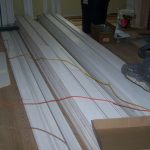
Medium Density Fibreboard (MDF)
Factory primed timber has its advantages for new work as protection against the elements and site conditions.
For interior work, the majority of the primed timber is MDF for trim work i.e. Door lining, architraves,, door stops, skirting boards and internal doors.
The type of primer used is generally an acrylic resin based paint.
Although ready primed, the priming coat should be examined and if necessary spot priming should be carried out.
Rendered walls
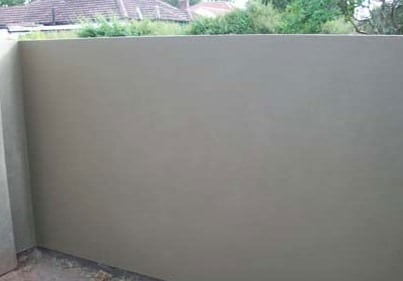
Rendered Surfaces
Standard Rendering is based on three basic elements: 1 gypsum cement : 1 hydrated lime : 6 Sharpe sand and applied by trowel to a smooth finish.
Other methods of application by spray produce textured finishes some of which are self coloured and do not need painting.
There is a range of products available and can be oil or water based and include smooth coatings to heavy textured finishes.
Once decided on the type of finish required and paint brand obtain the products data sheet of the company's website and confirm it meets with your requirements.
Preparation for all coatings.
Ensure the surface is dry and free from all dust, dirt, loose material and surface contaminates.
Apply the priming/sealer coat and finishing coats in accordance with the manufactures instructions.
Manufactures including the following offer a range of suitable products.
Andura Coatings. https://www.andura.com Tel. 01869 240374
Dulux Trade. https://www.duluxtradepaintexpert.co.uk
Johnstones. https://www.johnstonestrade.com/products
Brickwork
Brickwork.
In general the bricks used for normal building works are:
Commons which are dense and smooth. To paint this type of brick is not straight forward as keying onto the brick surface can be difficult.
Because of this, the surface needs to be keyed and this can be done by either sweep sand basting or acid etching.
Once the surface preparation has been carried out and the surface is clean, dry, and free from other surface contaminates, the selected paint manufacturers masonry paint can be applied by following their specific recommendations.
Andura Coatings. https://www.andura.com
Dulux Trade. https://www.duluxtradepaintexpert.co.uk
Johnstones. https://www.johnstonestrade.com/product/pliolite-based-masonry-finish https://www.johnstonestrade.com/products
Sandtex. https://www.sandtexpaints.com/uk/masonry-paint/ https://www.sandtex.co.uk
Corroded Aluminum
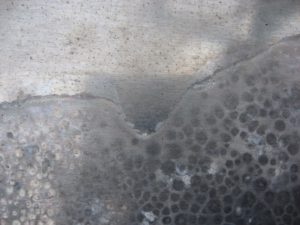
Aluminum is used for many projects within the building and construction industry.
While it is relatively free from corrosion paint coatings applied at the factory is often required.
See: Powder Coating and Coil Coating
New aluminum sheeting which requires on site painting the specification would be as that for Galvanised Steel.
See: Specifications: Galvanised Steel.
uPVC (Un-plasticised Polyvinyl Chloride)
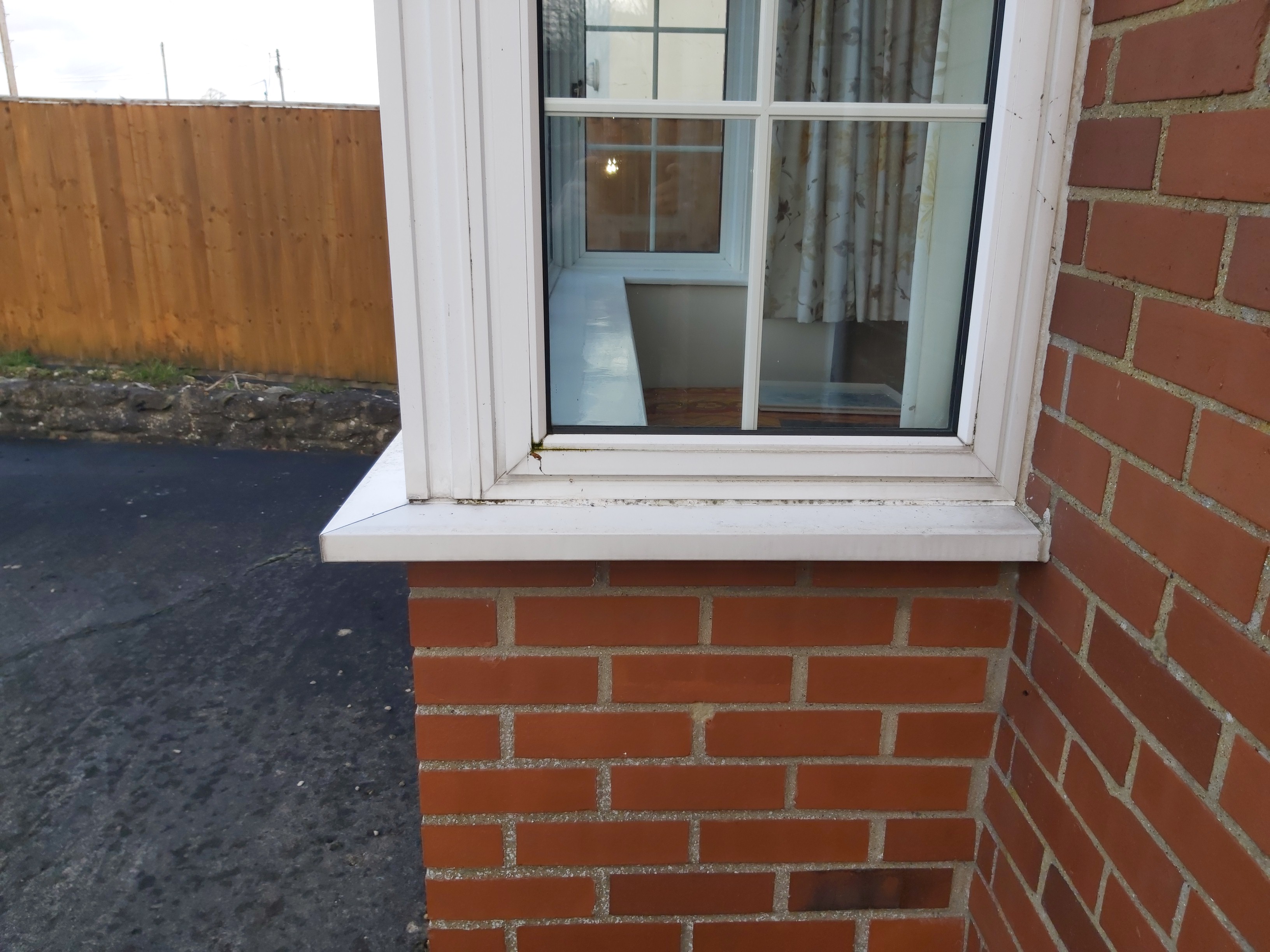
uPVC (Un-plasticised Polyvinyl Chloride)
Specification.
Only weather items should be considered for repainting.
Surface preparation.
All surfaces should be thoroughly washed down to remove all dust, dirt. All signs of organic growths, mould or algae should be treated with a fungicidal solution applied in accordance with the manufactures instructions.
Wash with fresh water and leave the surface clean and free from any surface contaminates.
Pre-painting.
Wipe down with Methylated spirit and allow to dry.
Note: Do not abrade the surface or clean with strong solvents.
Painting
Paint manufactures offer water based systems for uPVC, therefore, the selected supplier’s product data sheet should be check before use. Some systems are self-finishing which is a primer, undercoat and finish all in one.
Marine Plywood
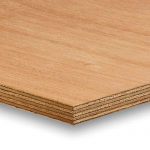
Marine plywood
Marine Plywood is manufactured from durable face and core veneers, with few defects and each layer of veneer is bonded with a high performance resin.
The paint systems available from specialist suppliers are based on high performance epoxy and polyurethane coatings.
Due to the construction and quality of marine ply it is suitable for use in areas of high humidity when treated with the appropriate paint products.
https://www.international-marine.com/
https://www.hempel.co.uk/en-GB/marine
https://www.awlgrip.com/region-selection?destination=products
https://www.youtube.com/watch?v=eF5LVBW1vl8
Hardwood Painting
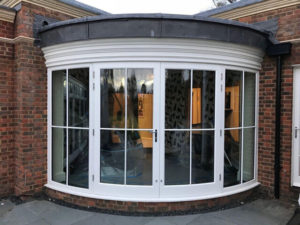 Hardwood specification.
Hardwood specification.
General.
In the building and construction industry the two most common hardwoods used are Oak and Chestnut.
For exposed timber structures and for internal components such as doors and trim work, Oak is selected. While Chestnut is used for areas such as exterior cladding.
Both of these wood species contain Tannin (tannic acid) and when use under dry conditions present no problems. However, if the timber surface comes in contact with moisture the acid can be activated and comes to the surface.
If the woods have been painted with a conventional alkyd oil paint then tannin bleeding can occur causing the paint coating to yellow.
See: Yellowing in Problems and Solutions.
To prevent this the following generic specification can be considered.
Preparation.
The bare timber should be sanded down with suitable grade sandpaper to a smooth finish. Any hard surface resin from wood knots or sap residue should be removed by the most appropriate means.
Remove all other surface contaminates as required leaving the surface clean and dry.
Areas around wood knots and sap residue should be wiped over with methylated spirit and allowed to dry.
Priming
Priming coats for hardwood vary from different manufactures which included acrylic resin, spirit and alkyd based aluminum primers.
Undercoat and finishes.
For compatibility it is necessary to follow the selected paint manufacturers instruction.
Note:
Manufactures may recommend using a heat source to draw the resin to the surface to remove the resin but if the resin pocket is deep this may not be successful.
Cutting out knots or replacing a section of the timber may be required. See: Resin Exudation in Problems and Remedies
Ferrous Metal
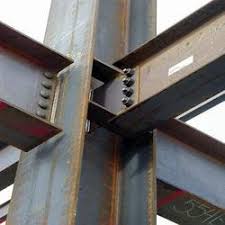
General.
When hot molten steelwork is milled and rolled to profile required such as stanchions and girders as the steel passes through the rollers a thin film of oxide is left on the surface and this is known as mill scale.
This sacrificial layer of oxide must be removed before painting and can be carried out using various methods such as grit/sand blasting (Also known as abrasive blasting) or Needle Gun.
If the steelwork is allowed to weather and all that is left on the surface is rust, then this can be successfully removed by hand and or mechanical wire brushes.
Preparation
Once the appropriate preparation work has been carried out leaving the surface dry free from all contaminates then painting can proceed.
Note: if the surface is prepared byway of Grit/sand blasting then priming should commence immediately and before oxidisation of the steel surface takes place.
Priming.
While a Zinc Phosphate metal primer is generally recommended, paint manufactures do offer others, including: General Purpose primers for wood and metal, Water based modified Acrylic based along with single and two pack epoxy paints which are high performance coatings.
It is always advisable to contact your preferred paint supplier to obtain the appropriate data sheet to establish their recommendations and painting system .
Where the usage requires a chemical resistant coatings, information should be obtained from manufactures who specialise in high performance coatings such as:
Sherwin-Williams (Leighs) https://www.swpaintsonline.com/
https://www.akzonobel.co.uk
https://www.youtube.com/watch?v=2hguRUF0P4A
Masonry New - Smooth Finishes
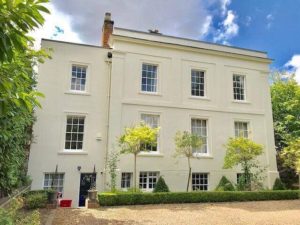 Masonry Paint onto New Work.
Masonry Paint onto New Work.
Remove all mortar splashes, make good where necessary with the appropriate external plaster filler. Ensure the surface is dry, clean and free from surface contaminates; mould, lichen. and efflorescence.
Traditional common bricks (Fletton) and polished concrete should be acid washed (hydrochloric) or sweet blasted to obtain a suitable key for painting.
Painting
Generically, onto new work all systems would require 1 sealer coat followed by 2 full coats of the masonry paint.
Manufactures products can vary from, modified PVA external coatings, Acrylic based paints, modified Silicone based coats and oil coatings based on Pliolite®resin.
As painting systems vary from different manufactures reference should be made to their product data sheet to ensure it meets with the required performance.
Note:
See problems and Remedies Carbonation of Concrete.
Pliolite ® trademark is registered to Goodyear Tyre and Rubber company.
Suppliers of Masonry finishes include:
Andura Coatings. https://www.andura.com
Johnstone Paints. https://www.johnstonestrade.com
International Paints. https://international.brand.akzonobel.com
Dulux Paints. https://www.duluxtradepaintexpert.co.uk